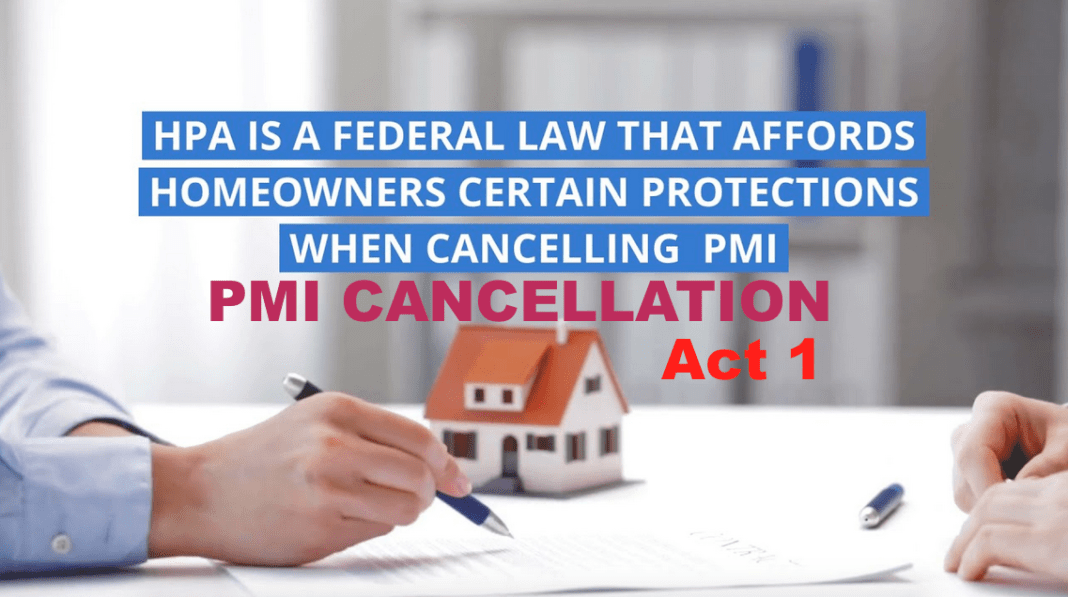This is a helpful insight of how to remove private mortgage insurance (PMI) from your mortgage by following the PMI cancellation act guidelines in this article. Pay close attention so that you can get rid of mortgage insurance on FHA and conventional loans.
When you have mortgage insurance as part of your monthly payments, you may wonder about removing it to lower your costs. The process of removing mortgage insurance varies based on the type of mortgage you have.
For FHA loans, there are mortgage insurance premiums (MIP), while conventional loans have private mortgage insurance (PMI). Despite the similar names, the procedures for getting rid of them differ. Keep reading to find out more!
How to remove Mortgage Insurance Premiums (MIP) from FHA loans
FHA loans are mortgages provided by private lenders and backed by the Federal Housing Administration (FHA). Every homeowner with an FHA loan must pay an initial upfront mortgage insurance premium and ongoing annual mortgage insurance premiums.
If you made a down payment of 10% or more on recent FHA loans, you might be able to stop paying annual mortgage insurance premiums after 11 years. However, if your down payment was less than 10%, you’ll have to pay these premiums for the entire mortgage term. Different mortgage requirements and eligibility apply for FHA loans that closed before June 3, 2013. You can find details about the earlier rules on the HUD website.
Interestingly, the amount of equity you have in your home doesn’t affect your FHA mortgage insurance premiums. Even if you have 20% equity, you can’t cancel the premiums. This leads some FHA loan homeowners to consider refinancing to a conventional loan to eliminate mortgage insurance.
One way to achieve this is by refinancing your FHA loan into a conventional mortgage. But remember, you’ll need at least 20% home equity for this, or else you’ll have to pay for private mortgage insurance. So, it’s important to assess your home’s equity value before pursuing this refinance.
Also, think about comparing the closing costs of a refinancing with the costs of continuing to pay mortgage insurance. On average, mortgage refinances have around $5,000 in closing costs according to Freddie Mac.
It is advisable to determine if paying these costs is a wise decision for your situation. Moreover, refinancing could potentially lower your interest rate while removing mortgage insurance premiums. Just remember that by refinancing, your total loan-related expenses over the loan’s lifespan might increase.
How to remove Private Mortgage Insurance (PMI) from Conventional loans
A lot of homeowners in the US, Canada as well as UK have the popular conventional loan, which is also known to as a “traditional mortgage” or simply a “mortgage.” When you purchase a house using a conventional loan, you’ll usually have to pay for private mortgage insurance (PMI) unless you put down at least 20%. The same goes for when you refinance – your home equity should be at least 20% to avoid PMI.
The good news is that you can ask your lender to remove PMI once you have 20% home equity. Building home equity involves paying off the principal on your mortgage. Additionally, if your home’s value increases, your home equity can also go up. If house prices in your area are rising, it might be a good idea to check your home’s current value. You could have enough home equity to qualify for PMI removal.
Remember, you’ll need to make a written request to your lender for PMI cancellation. Typically, you should have a solid payment history and be up-to-date on your loan to get approval for your cancellation request. It’s important to note that these rules apply to single-family primary homes financed on or after July 29, 1999.
Just Wait for automatic removal of PMI
Borrowers usually have to take off private mortgage insurance from your loan once your home equity hits 22%. This means that if you didn’t request to remove PMI when your home equity was at 20%, they should automatically take it off once your home equity reaches 22%. Just make sure you’ve been keeping up with your loan payments and have a positive payment history to qualify for PMI removal without asking.
Refinancing Mortgage to remove PMI
Removing PMI doesn’t necessarily involve refinancing; it’s about your home equity value, often measured by your loan-to-value ratio. The process varies when you’re aiming to stop paying mortgage insurance premiums tied to an FHA loan. In such cases, refinancing might be the primary way to eliminate mortgage insurance.
What is Homeowners Protection Act (PMI Cancellation Act)1?
According to CFPB Consumer Laws and Regulations HPA, outlines rules for ending and stopping or removing PMI from mortgage. It includes guidelines for canceling and terminating PMI, specifies when notifications need to be given, and mandates that any unused premiums be returned.
The PMI Cancellation Act also gives you the advantage of being able to eliminate PMI when you’ve paid down a significant portion of your mortgage principal, leading to 20 percent equity in your home. This usually happens when your loan balance drops to 80 percent of the home’s initial value.
You can download the PMI Cancellation Act from Consumer Financial Protection Bureau (CFPB).
Helpful Mortgage Overview and Guides:
- Minimum Down Payment on a Home Loan
- Refinancing Your Home: The Pros and Cons
- What is Conforming Loans, Rates and Mortgage
- Non-conforming loans rate, Underwriting Guidelines
- Jumbo Loan and Interest Rates: How to Qualify for it
- FHA Loan insured by the Federal Housing Administration
- VA Home Loan Buyer’s Guide, Program Benefits, Eligibility
- USDA Home Loan by United States Department of Agriculture
- Government-backed Mortgage Home Loan for First Time Buyers
- How to Calculate Debt-to-income Ratio for a Mortgage Application






